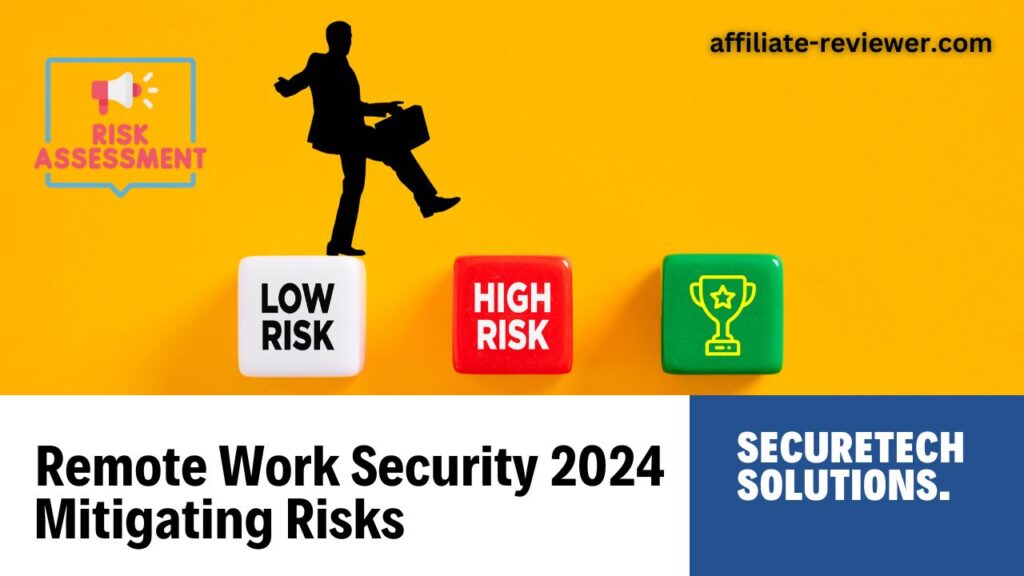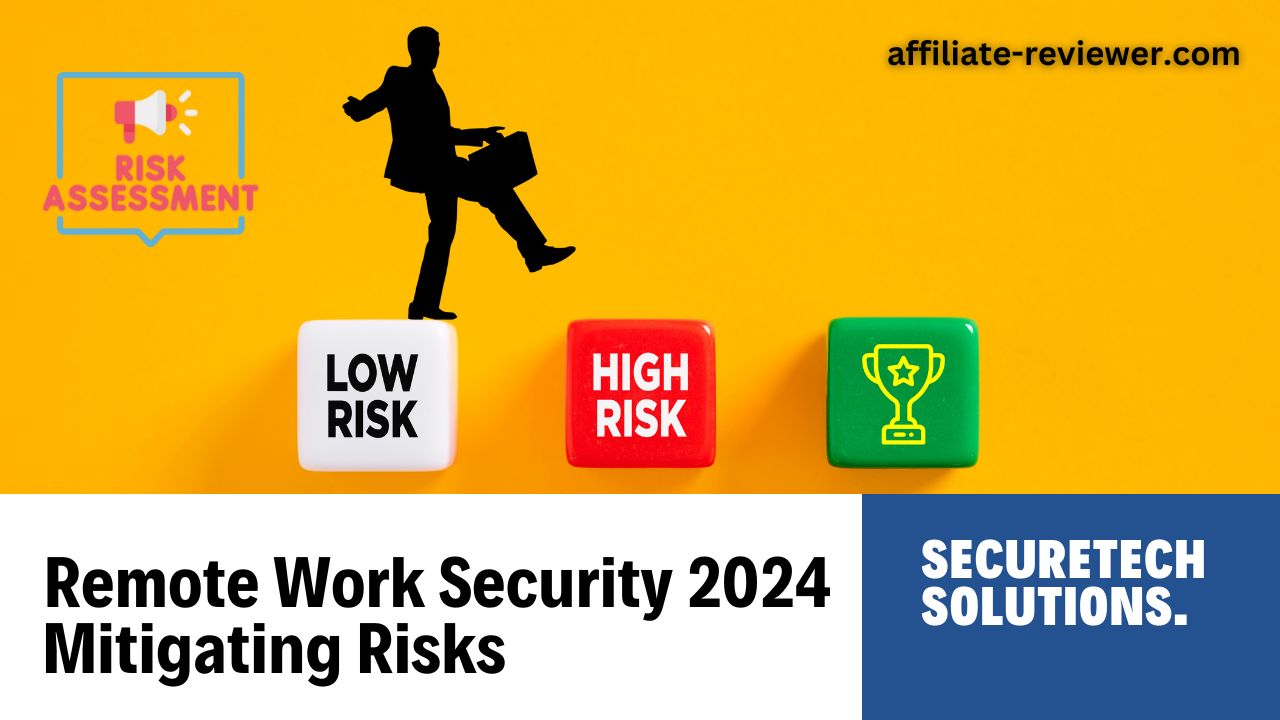Hey I’m Noyon, Welcome to my article Remote Work Security 2024: Mitigating Risks
In the wake of the global shift towards remote work, ensuring robust security measures has become paramount. With the evolution of technology, the landscape of remote work security continues to evolve, presenting both challenges and opportunities for businesses. This article delves into the nuances of remote work security in 2024, highlighting key strategies to mitigate risks effectively.
Skyrocket Your Online Earnings! Watch Our Exclusive Video and Start Earning Today!

The Rise of Remote Work
The proliferation of remote work has transformed traditional office dynamics. Companies across industries have embraced remote work models to adapt to changing circumstances, offering flexibility to employees while maintaining productivity levels.
Challenges in Remote Work Security
- Cybersecurity Threats: The remote work environment is vulnerable to cyber threats, including phishing attacks, malware, and data breaches.
- Endpoint Security: Securing endpoints such as laptops, smartphones, and tablets used for remote work is crucial to prevent unauthorized access.
- Data Privacy Concerns: Protecting sensitive data from unauthorized access or leaks poses a significant challenge in remote work setups.
Mitigating Risks in Remote Work Security
- Implementing Strong Authentication Measures
- Enforcing multi-factor authentication (MFA) adds an extra layer of security, requiring users to provide multiple forms of verification to access systems.
- Utilizing biometric authentication, such as fingerprint or facial recognition, enhances security while offering user convenience.
- Securing Network Connections
- Encouraging the use of virtual private networks (VPNs) ensures encrypted connections, safeguarding data transmission over public networks.
- Implementing firewalls and intrusion detection systems (IDS) protects against unauthorized access and malicious activities.
- Regular Security Training and Awareness Programs
- Conducting regular training sessions on cybersecurity best practices educates employees about potential threats and equips them with the knowledge to identify and report suspicious activities.
- Simulating phishing attacks through controlled exercises helps raise awareness and fortify defenses against real-world threats.
- Endpoint Security Solutions
- Deploying endpoint security solutions, such as antivirus software, endpoint detection and response (EDR) systems, and mobile device management (MDM) tools, safeguards devices from malware and unauthorized access.
- Data Encryption and Access Controls
- Encrypting sensitive data ensures that even if it’s intercepted, it remains unreadable to unauthorized parties.
- Implementing strict access controls, including role-based access policies and least privilege principles, limits access to confidential information, reducing the risk of data breaches.
Skyrocket Your Online Earnings! Watch Our Exclusive Video and Start Earning Today!
The Role of Compliance and Regulations
Adhering to industry-specific regulations and compliance standards, such as GDPR, HIPAA, or PCI DSS, is essential for maintaining data security and protecting customer privacy in remote work environments.
The Evolution of Remote Work Security Tools
Introduction to Security Tools
- Antivirus and Anti-Malware Software: These tools detect and remove malicious software, like viruses, worms, and trojans, from computers and networks.
- Firewalls: Acting as a barrier between trusted internal networks and untrusted external networks, firewalls filter incoming and outgoing traffic based on predetermined security rules.
- Intrusion Detection Systems (IDS): IDS monitor network traffic for suspicious activities or security policy violations, alerting administrators when potential threats are detected.
- Endpoint Detection and Response (EDR): EDR solutions continuously monitor endpoint devices for signs of malicious activity, enabling swift detection and response to security incidents.
- Virtual Private Networks (VPNs): VPNs encrypt network traffic, ensuring secure communication over public networks such as the internet, protecting data from eavesdropping and interception.
- Data Loss Prevention (DLP): DLP solutions help prevent the unauthorized disclosure of sensitive data by monitoring, detecting, and blocking the transmission of confidential information.
- Identity and Access Management (IAM): IAM systems manage user identities and permissions, ensuring only authorized individuals have access to specific resources or data.
- Encryption Tools: Encryption tools encrypt data to make it unreadable to unauthorized users, safeguarding sensitive information both at rest and in transit.
Emerging Technologies in Remote Work Security
- Zero Trust Architecture: Zero trust architecture assumes that no entity, whether inside or outside the network perimeter, can be trusted by default, requiring continuous verification of identity and strict access controls.
- Artificial Intelligence (AI) and Machine Learning (ML): AI and ML technologies enhance threat detection capabilities by analyzing vast amounts of data to identify patterns and anomalies indicative of potential security threats.
- Blockchain Technology: Blockchain technology offers secure and tamper-proof record-keeping, making it ideal for ensuring the integrity and authenticity of sensitive data and transactions in remote work environments.
- Secure Access Service Edge (SASE): SASE converges networking and security functions into a cloud-native architecture, providing comprehensive security and access control for remote workers accessing cloud-based applications and services.
Incorporating these advanced technologies into remote work security strategies strengthens defenses and enables organizations to adapt to evolving threats in an increasingly remote work landscape.
Skyrocket Your Online Earnings! Watch Our Exclusive Video and Start Earning Today!
The landscape of remote work security in 2024 is characterized by evolving challenges and innovative solutions. By implementing a multi-layered security approach, leveraging advanced technologies, and fostering a culture of cybersecurity awareness, organizations can effectively mitigate risks and secure their remote work environments. As remote work continues to shape the future of work, prioritizing remote work security remains essential for safeguarding business operations, protecting sensitive data, and maintaining trust with customers and stakeholders.

